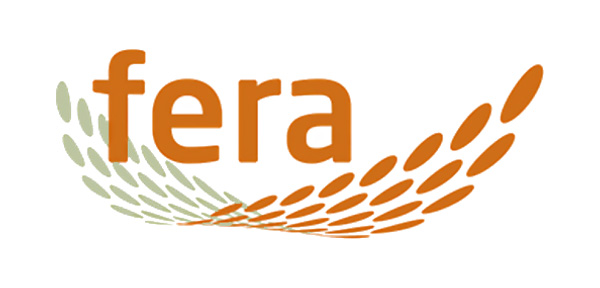Containing the spread of a deadly plant disease
Amid concerns about the possible emergence of a deadly new plant disease, Fera Science has created an ArcGIS app and dashboard to enable horticulturalists to coordinate thousands of plant and tree inspections nationwide. Use of this sophisticated solution is expected to help the Government contain the spread of the disease and safeguard Britain’s natural environment.
Inspectors will use an ArcGIS mobile solution to gather location-referenced plant samples, plant health data and images in the field
Government agencies and other stakeholders will trace the spread of the disease and monitor inspections on an Esri dashboard
Esri UK’s Professional Services group developed Python scripts to automate and streamline the complete test and trace process
The Challenge
One of the most damaging plant bacteria ever identified is spreading in countries around the world. Called xylella fastidiosa (Xf), it has been detected in France, Spain, Italy and Portugal and, if it were to gain a foothold in the UK, it could affect dozens of plant species, including elm, plane and oak trees.
Under current legislation, if Xf is detected in the UK, all host plants within 100 metres must be destroyed and host plants within a 5 km radius must be inspected and tested. This means that plant inspectors from the Animal and Plant Health Agency (APHA), an executive agency of the Department for Environment, Food and Rural Affairs (DEFRA), could need to inspect over 18,000 plants for each confirmed case of Xf, anywhere in the country.
With the number of confirmed cases of Xf in mainland Europe increasing all the time, APHA realised that it would need to find a fast and effective way to establish inspection zones around ailing plants, conduct and record host plant inspections on the ground and monitor the spread of Xf. The faster it could detect infected plants, the faster it could react to limit the potentially devastating impact of the disease.
“The ArcGIS-based system we have developed will help the Government to react quickly to detect, trace and contain the disease.”
Lee Butler, GIS Specialist, Fera Science
The Solution
Working with APHA, Fera Science has used Esri’s ArcGIS platform to develop a complete end-to-end solution to support plant inspections, including testing plant samples and tracing of the spread of the disease.
When a first case of Xf is detected in the UK, a geoprocessing model, developed using Esri’s ModelBuilder, will create the initial inspection zone around the plant, divided into 100 metre and 1 km grid squares. Inspectors will then use an intuitive app, created with Esri’s Collector for ArcGIS, to view interactive maps of their assigned inspection grids, on their mobile devices, and inspect up to 50 host plants in each square. They will collect a sample from each plant, put the sample into a bag with a barcode and use the Collector app to record the barcode, together with the location of the plant, plant health observations and pictures.
When laboratories test the samples, the results will be recorded against the barcodes and uploaded via a web portal to ArcGIS. Python scripts, developed by Esri UK’s Professional Services team, will combine the test results with the data collected in the field and categorise each plant as either diseased, free of disease or inconclusive test. All the data will then be visible on an Esri Operations Dashboard, enabling APHA, DEFRA and other key stakeholders to view the locations and health of each inspected plant in near real time. Whenever a new positive result is recorded, the surrounding inspection zones will be automatically created, allowing inspectors to start collecting new samples straight away.
“The ArcGIS solution can support hundreds of inspectors doing thousands of plant inspections each week.”
Lee Butler, GIS Specialist, Fera Science
Benefits
Rapid response to a potential disease
Using ArcGIS, Fera Science has been able to create, test and deliver a functioning solution for APHA very quickly that can be put into action as soon as it is needed. As yet, Xf is not thought to be present in the UK, but, if it is detected here, plant health inspectors will have the necessary tools to respond. Lee Butler, GIS Specialist at Fera Science, says, “The ArcGIS-based system we have developed will help the Government to react quickly to detect, trace and contain the disease.”
Fast, efficient inspections in the field
The ArcGIS-driven test and trace process is fast and highly efficient, compared to APHA’s previous paper-based method of doing plant inspections in the field. “In an Xf outbreak, regulations stipulate that as many as 18,960 new plant inspections need to be undertaken each time an infected plant is identified,” says Butler. “It would be very difficult for existing systems to record and handle this volume of data. The ArcGIS solution can support hundreds of inspectors doing thousands of plant inspections each week.”
Real-time data to trace the spread of disease
If Xf is detected in the UK, APHA will be able to see near real-time data on diseased plants and their locations, all around the UK. The ArcGIS dashboard presents the data in a spatial, map-based format that is simple to understand at a glance, enabling people to trace the spread of the disease very easily. Users can see which grid squares have been inspected, monitor the progress of inspections and identify where best to allocate resources based on the latest test results.
Effective collaboration of many stakeholders
The ArcGIS solution can be used by multiple stakeholders, not just APHA. Therefore, in the case of a major outbreak of Xf, inspectors from other organisations and landowners, such as the Forestry Commission, could use the Collector app on their own mobile devices to collect standardised data and samples in a coordinated approach. Other organisations can also be given access to the same Esri dashboard enabling them to collaborate more effectively with APHA and implement joined-up strategies to detect and eventually eradicate the disease from the UK completely.



